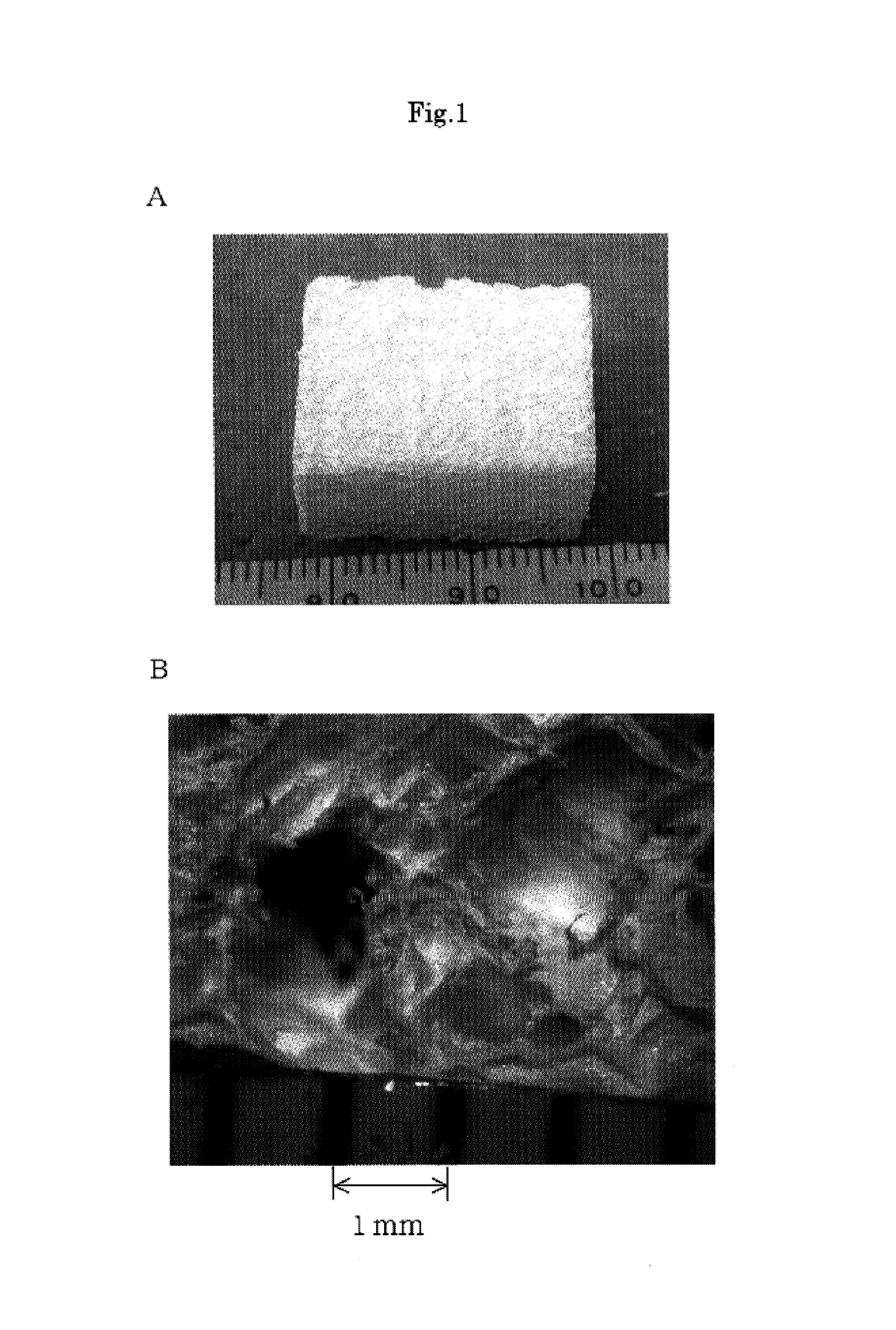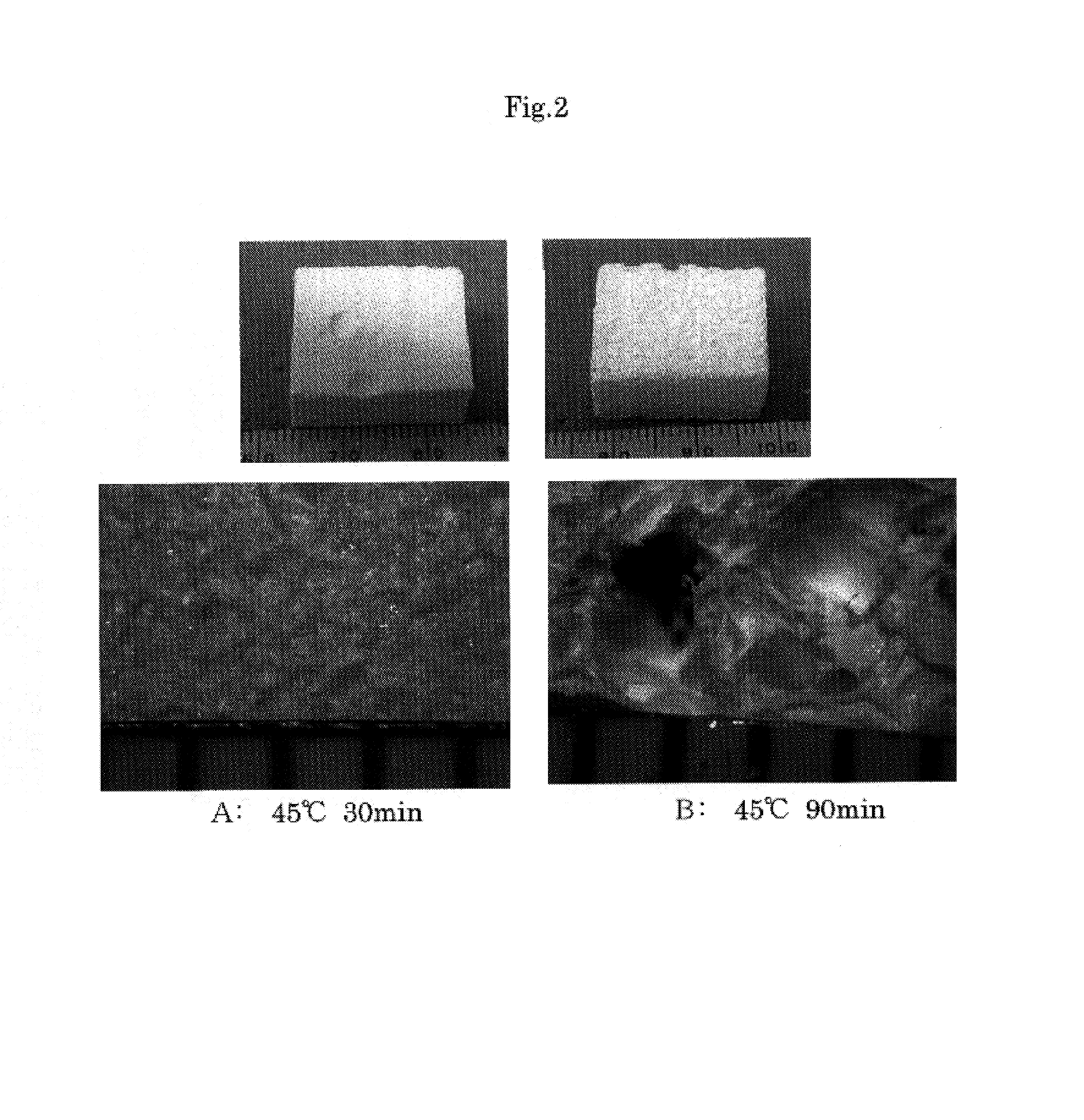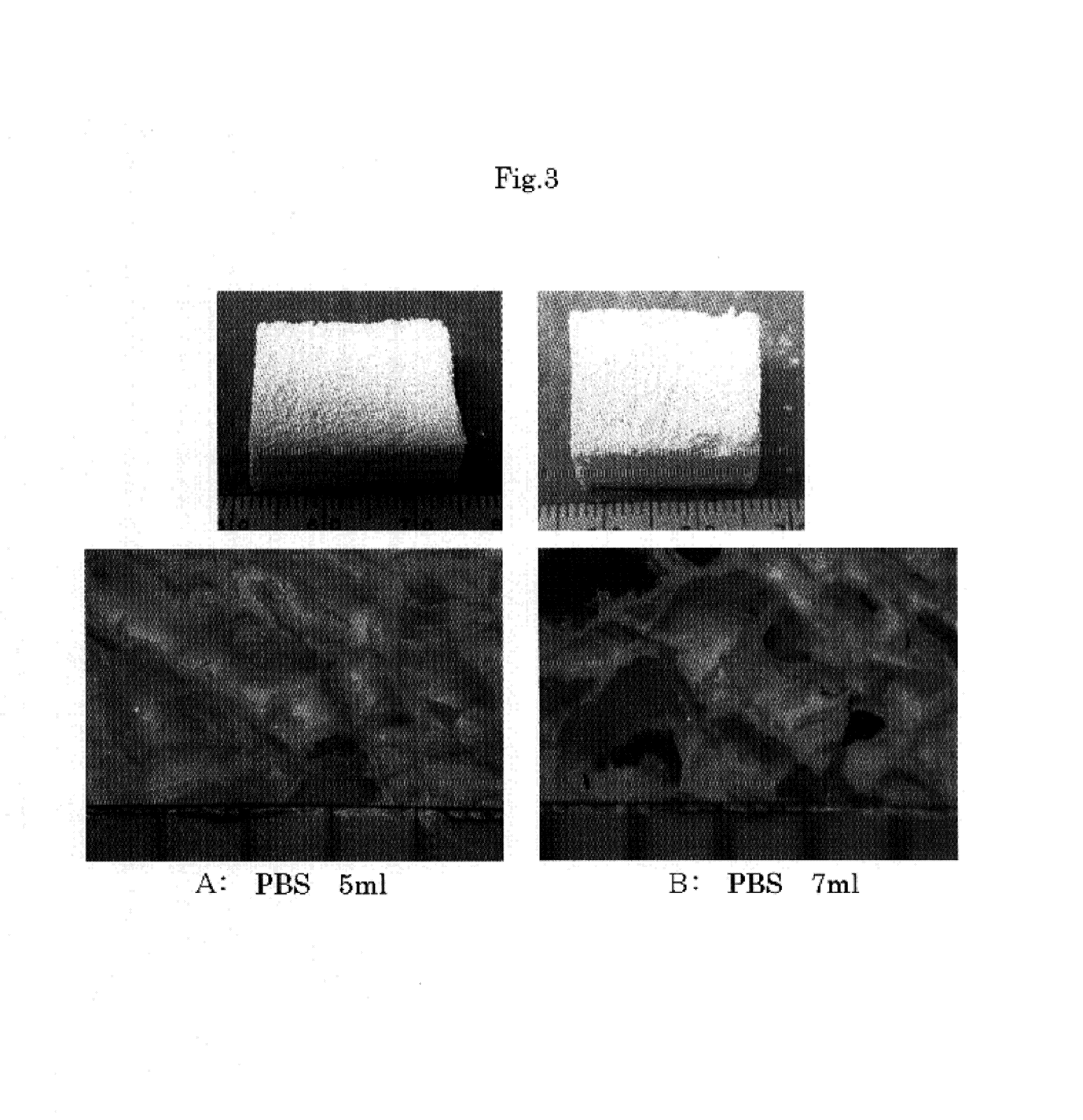Process for producing porous composite materials
a composite material and porous technology, applied in the field of porous composite material production, can solve the problems low drug adsorption ability, and inability to penetrate pores that did not communicate with the exterior, and achieve the effects of low compressive strength, excellent operability, and high drug adsorption ability
- Summary
- Abstract
- Description
- Claims
- Application Information
AI Technical Summary
Benefits of technology
Problems solved by technology
Method used
Image
Examples
example 1
Preparation of a Hydroxyapatite / Collagen (HAp / Col) Porous Body
1. Production of HAp / Col Composite Materials
(1) Gelatinization of Collagen
[0089]In accordance with the method of Kikuchi et al. (M. Kikuchi et al., Biomater., 22 (13)(2001), 1705–1711), 500 mg of HAp / Col complex powders (HAp:Col=3:1, lyophilized powders) were prepared. PBS (6 ml) was added thereto, followed by mixing. The resultant was incubated at 45° C. for 90 minutes, and a part of the collagen was allowed to gelatinize.
(2) Internal Crosslinking
[0090]The gelatinized HAp / Col complex was allowed to cool. When the complex became runny, a mixture of 2 μl of 25% glutaraldehyde with 0.5 ml of PBS was added thereto, and the resultant was placed in a mold, followed by ice cooling.
(3) Freezing
[0091]The ice-cooled HAp / Col complex was kept in the mold, placed in a 450 ml plastic case in that state, and then sealed. The resultant was allowed to freeze in a freezer at −20° C.
(4) Lyophilization
[0092]The frozen HAp / Col complex was ly...
example 2
Examination of Conditions for Producing the HAp / Col Porous Body
[0095]Conditions in the production step in Example 1 were varied, and the pore diameters and the porosities of the resulting porous bodies were examined. These porous bodies were not subjected to surface crosslinking.
1. Examinations of conditions for gelatinization
[0096](1) Incubation Time
[0097]The HAp / Col porous body was prepared in the same manner as in Example 1 except that the incubation time in the step for gelatinization was changed to 30 minutes. The resultant was compared with the HAP / Col porous body obtained in Example 1 (FIG. 2).
[0098]As a result, the porous body that was prepared with an incubation time of 30 minutes had very small pore diameters compared with that prepared with an incubation time of 90 minutes.
[0099](2) The Amount of PBS
[0100]The HAp / Col porous body was prepared in the same manner as in Example 1 except that the amount of PBS added in the step of gelatinization was changed to 5 ml or 7 ml. Th...
example 3
Experimentation for Transplanting the HAp / Col Porous Body to a Rat Thighbone
1. Preparation of Implants for Transplantation
[0112]In accordance with the method of Kikuchi et al., 500 mg of HAp / Col complex powders (HAp:Col=3:1) were prepared. PBS (4 ml), 300 mg of gluconic acid, and 83 mg of calcium carbonate were added thereto, and the mixture was incubated at 40° C. for 90 minutes for gelatinization. The gelatinized complex was allowed to freeze in a freezer at −20° C., and further lyophilized to obtain the HAp / Col porous body. The resulting porous body was immersed in a solution of 0.01% glutaraldehyde for 2 hours to introduce crosslinking between collagens on the surface of the complex (surface crosslinking).
[0113]Porous bodies were prepared under the above conditions. One type thereof was provided with internal crosslinking in the same manner as in Example 1, and another type was provided with surface crosslinking introduced with 0.5% glutaraldehyde (GA).
[0114]The prepared porous ...
PUM
| Property | Measurement | Unit |
|---|---|---|
| porosities | aaaaa | aaaaa |
| porosity | aaaaa | aaaaa |
| pore diameters | aaaaa | aaaaa |
Abstract
Description
Claims
Application Information
 Login to View More
Login to View More - R&D
- Intellectual Property
- Life Sciences
- Materials
- Tech Scout
- Unparalleled Data Quality
- Higher Quality Content
- 60% Fewer Hallucinations
Browse by: Latest US Patents, China's latest patents, Technical Efficacy Thesaurus, Application Domain, Technology Topic, Popular Technical Reports.
© 2025 PatSnap. All rights reserved.Legal|Privacy policy|Modern Slavery Act Transparency Statement|Sitemap|About US| Contact US: help@patsnap.com



